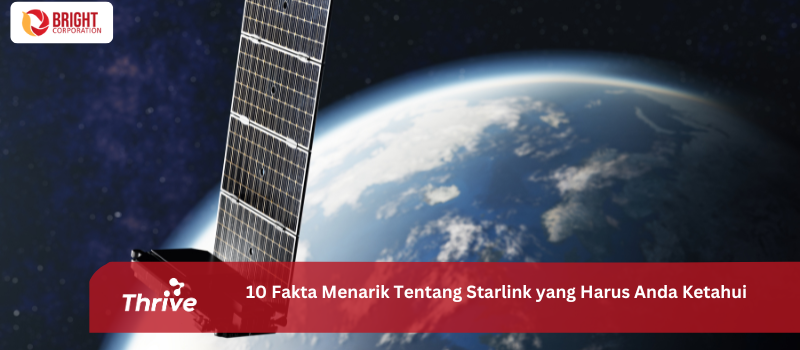Starlink, an ambitious project from SpaceX, has captured the world's attention with its promise to provide high-speed internet across the planet. This project aims to overcome internet connectivity problems in remote and underserved areas. The following are 10 interesting facts about Starlink that you should know.
1. What is Starlink?
Starlink is a satellite network built by SpaceX to provide high-speed internet services throughout the world. By utilizing thousands of small satellites orbiting low on Earth, Starlink aims to provide fast and stable internet connections in areas that are difficult to reach by traditional infrastructure.
2. Number of Satellites in Orbit
To date, Starlink has launched more than 1,500 satellites into low Earth orbit, with plans to launch up to 12,000 satellites in the first phase of the project. Ultimately, SpaceX hopes to have up to 42,000 satellites in orbit to ensure comprehensive global coverage.
3. Internet Speed Offered
Starlink promises incredible internet speeds. Users can enjoy download speeds between 50 Mbps to 150 Mbps, with latency of around 20 to 40 milliseconds. This speed is enough for streaming videos, playing online games, and other internet activities without a hitch.
4. How Starlink Works
Starlink satellites operate in low Earth orbit (LEO) at an altitude of about 550 km. This is much lower than traditional communications satellites which are geostationary at an altitude of 35,000 km. Due to their shorter distances, LEO satellites can provide lower latency and higher speeds.
5. Launch with Falcon 9 Rocket
All Starlink satellites are launched into orbit using SpaceX's Falcon 9 rocket. The Falcon 9 is known for its reusability, which helps reduce launch costs and makes the Starlink project more economical.
6. Service Fees
Starlink offers its internet service for a monthly subscription fee of around $99, and hardware costs around $499 which includes a satellite dish and Wi-Fi router. Although more expensive than some traditional internet services, the price is commensurate with the benefits offered, especially in remote areas.
7. Satellite Maneuverability
Starlink satellites are equipped with an ion thruster system that allows them to maneuver in orbit and avoid collisions with other objects in space. This technology also helps in de-orbiting satellites when they reach the end of their useful life, reducing the risk of space debris.
8. Commitment to the Environment
SpaceX is committed to minimizing the environmental impact of the Starlink project. In addition to using reusable rockets, SpaceX also designs its satellites to burn up in Earth's atmosphere when they are no longer used, reducing the amount of space debris.
9. Access in Disaster Areas
Starlink can be an important solution in disaster areas where traditional communications infrastructure is damaged or unavailable. By providing fast and reliable internet connections, Starlink can assist in rescue and recovery operations.
10. The Future of Starlink
Starlink continues to develop and expand its coverage. SpaceX is working to get permission from various countries to launch this service worldwide. Additionally, technology improvements and the launch of additional satellites will continue to increase the performance and coverage of Starlink services.
Starlink is a revolutionary project that has the potential to change the way we access the internet, especially in remote areas. With advanced technology and an ambitious vision, Starlink not only promises global connectivity but also opens up new opportunities for communications around the world. By understanding these interesting facts, we can better appreciate the significant impact this project could have in the future. Thrive, a leading technology company in Indonesia, has now collaborated as an official Starlink distributor. With this collaboration, Thrive is committed to bringing high-speed internet services from Starlink to various regions in Indonesia, especially remote areas that were previously difficult to reach by traditional internet infrastructure. This collaboration is expected to increase digital connectivity and support digital transformation throughout the archipelago.




























 Industrial Robotics Integration
Industrial Robotics Integration
 IT Outsourcing Service
IT Outsourcing Service
 Secure Internet SD-WAN Connection
Secure Internet SD-WAN Connection
 Digital Marketing Service
Digital Marketing Service









